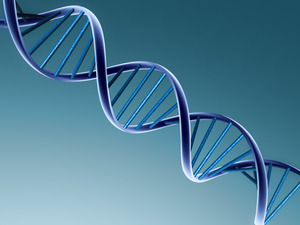Edwards’ syndrome is a disease that is caused by a gene abnormality, where a person has a third copy of chromosome eighteen. A person having this third, extra copy of chromosome eighteen is susceptible to major physical deformities and mental retardation, and as such, it is a very serious disease. The disease most often affects newborn babies, as it is impossible to spontaneously create an extra chromosome outside of birth.
Edwards’ syndrome is essentially when a genetic error takes place during cell formation, and the child is given the wrong number of chromosomes, thus resulting in an extra copy of chromosome eighteen. The disease is incredibly fatal and most babies do not survive the birthing process. For the babies that do make it through the rigorous process, it is estimated that approximately thirty to forty percent of them do not survive in excess of one month. Edwards’ syndrome is also known as trisomy (third chromosome) eighteen, and it is the second most frequently occurring trisomy, after trisomy twenty-one which causes Down syndrome.
The syndrome affects roughly one in every five thousand babies, and it is much more prevalent in females than males. Mothers who are older than thirty years old are the most likely to birth a baby affected by Edwards’ syndrome, though it can occur in other cases as well.
As Edwards’ syndrome severely affects the baby, one of the primary symptoms is noticeable weakness and fragility and many of the babies affected by it also appear to be underweight and its head is underdeveloped. Additionally, like Down syndrome, the baby also likely has low-setting ears, accompanied by a small mouth and jaw. In some instances, the baby may also have a cleft lip and/or clubfeet with webbed toes. Internally, numerous symptoms are present with Edwards’ syndrome. For instance, lung and diaphragm deformations are common, as are various heart defects. It is also possible for the child to have malformed kidneys, urogenital system malformations, and hernias.
There are several ways that a medical doctor can diagnosis the disease, both by physical and internal examination. Doctors often look for short breast bones and arched type finger patterns as leading indicators of the disease. In order to confirm their diagnosis, they also perform blood samples from the baby, in order to examine the baby’s chromosomes with a microscope. When performing the microscope examination, the doctors look for the extra chromosome eighteen to be revealed. It s also possible for the syndrome to be detected pre-birth, due to hereditary abnormalities, the mother’s age, sibling abnormalities, and tests. Essentially, the doctors are able to examine the fetus for indications. Due to extra amniotic fluid, the mother also tends to have an enlarged uterus.
There is no known cure for Edwards’ syndrome, and there isn’t a general consensus among doctors as to how to treat the physical abnormalities. Some doctors elect to perform various surgeries to attempt to correct the deformities, and others elect for other methods. Scoliosis, among other things, is common in survivors of the disease, and often doctors intervene and perform surgery to correct it. Children affected by Edwards’ syndrome also frequently have constipation and eating problems, thus the doctors must look for solutions to ensure their survival. Unfortunately, children affected by Edwards’ syndrome have an increased risk of contracting a Wilms’ tumor and other cancers, Doctors make their best attempt to take preventative steps to ensure the child’s long-term survival.




